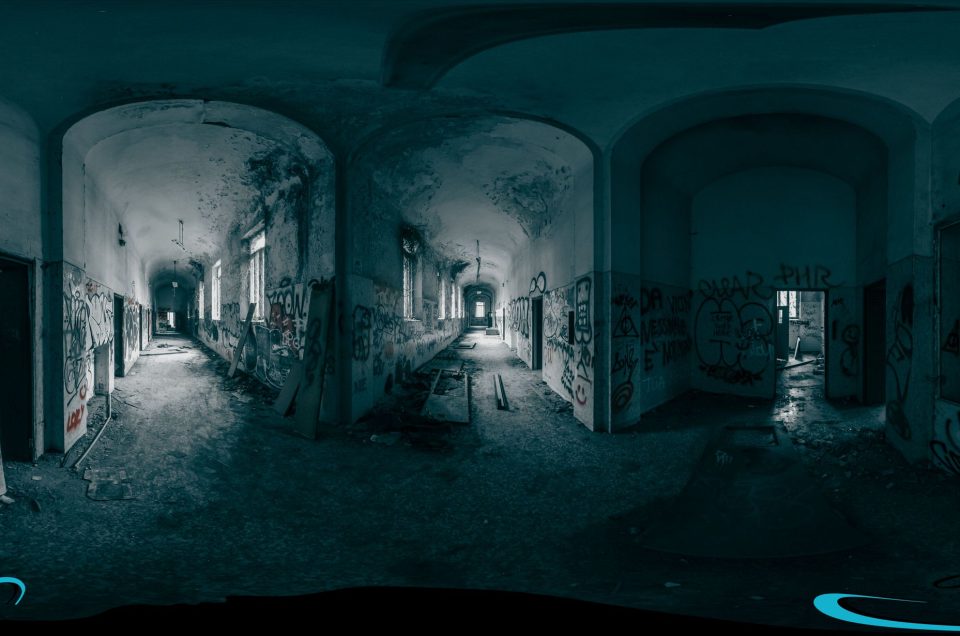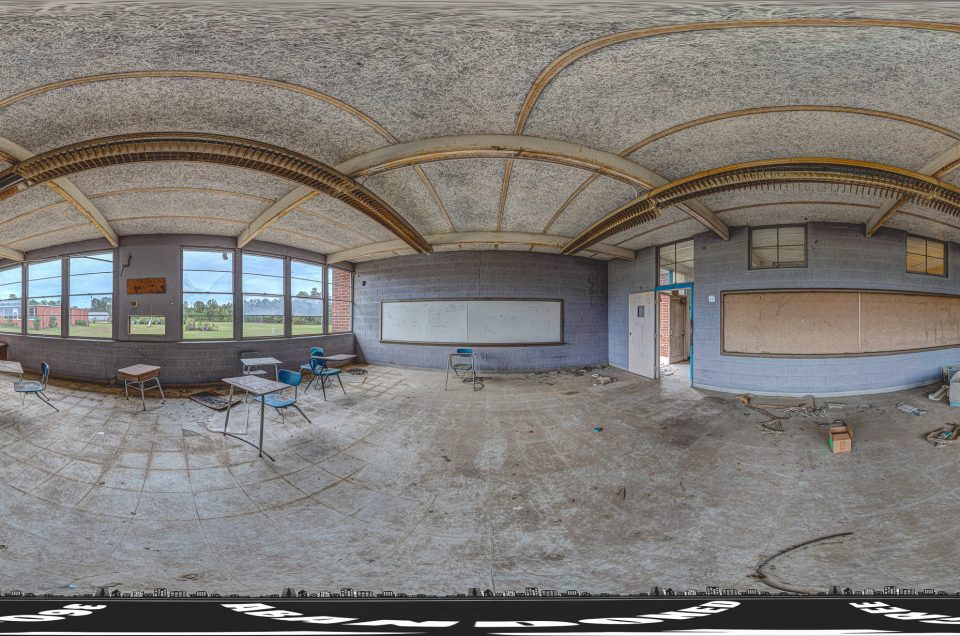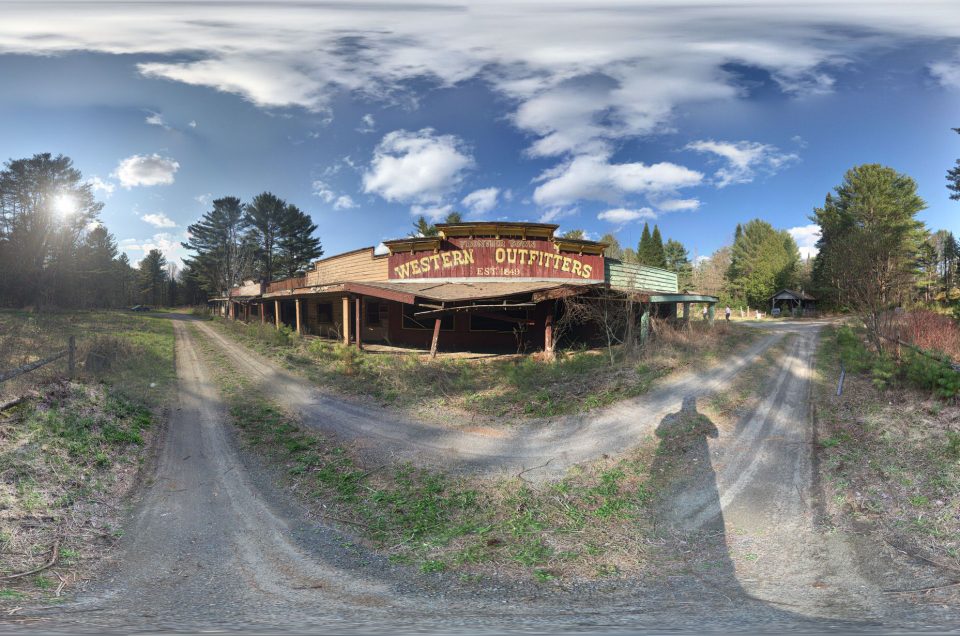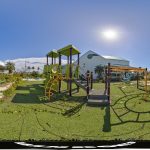Men’s State Prison: Milledgeville’s Abandoned Prison for Urban Explorers
Step inside the history and quiet decay of the Washington Building at Men’s State Prison. This long-standing structure in Milledgeville, Georgia, carries the weight of countless stories—peeling paint, barred corridors, and utility rooms that hint at the routines of a once-active correctional complex. For urban explorers, it offers a rare chance to study architecture, textures, and layers of time without setting foot on the property.
Experience the Washington Building at Men’s State Prison through a 38-image, self-guided 360-degree panoramic virtual tour. Drift from hallways to cell blocks at your own pace, examine details others might overlook, and immerse yourself in the atmosphere that defines true URBEX discovery—safely and responsibly—from wherever you are.
Click here to view it in fullscreen.
Nestled on the grounds of the old Central State Hospital campus in Milledgeville, Georgia, the Men’s State Prison stands as a haunting reminder of a bygone era in the state’s penal and mental health history. Built in 1950, this former minimum-security prison saw over six decades of use before it was shuttered in 2011. Once known as the “Washington Building,” it originally served as a segregated ward for African American patients at the state hospital. Today, its crumbling corridors and faded signs make it a popular urban exploration (URBEX) destination for adventurous visitors intrigued by Georgia’s abandoned places.
Men’s State Prison interior with rows of barred cells and aging fixtures. The facility was opened in 1950 and later operated as a Georgia Department of Corrections men’s prison until 2011. Inside, Men’s State had about 600–670 inmates, mostly elderly or disabled. It featured eight open dormitories (≈70 beds each) and only eight isolation cells, reflecting its minimum-security status.
Key Facts at a Glance
-
Built / Opened: 1950 (as the Central State Hospital “Washington Building”)
-
Original Use: Segregated unit for African American mental hospital patients.
-
Renamed/Repurposed: In 1978 it was transferred to the Georgia DOC and became Men’s State Prison.
-
Closed / Abandoned: 2011.
-
Capacity: Officially ~600 (Georgia DOC figure); reports note ~670 inmates in later years.
-
Nickname: “Washington Building” (after Booker T. Washington).
-
Location: 16.8 acres on Bostick & Lawrence Rd, Milledgeville (Hardwick postal address).
Central State Hospital Connection
Men’s State Prison is part of a much larger story: it sits on the historic Central State Hospital campus. Milledgeville’s psychiatric institution opened in the 1840s as the Georgia State Lunatic Asylum and grew into one of the nation’s largest mental hospitals. By the late 1950s it housed over 11,000 patients, and a Pulitzer-winning 1959 exposé by reporter Jack Nelson revealed dangerous abuses (unauthorized surgeries, experimental drugs, and neglect) that shocked the public. In response to these scandals, state officials renamed it Central State Hospital in 1967 and began reorganizing the campus. Indeed, by 1968 Central State had closed its farm and had “parceled out” much of its land to other state agencies – including the Georgia Department of Corrections. This transfer of land is exactly how the Washington Building came under the prison system’s control.
The Washington Building (1950)
The structure that became Men’s State Prison was originally the “Washington Building.” Named after Booker T. Washington, it opened in 1950 as a one-story brick ward for African American patients. (An annual report from 1951 notes it housed 1,000 “Negro female patients.”) For nearly three decades it functioned as a segregated ward of Milledgeville State Hospital. In 1978, the building was officially transferred from Central State to the Georgia Department of Corrections. At that time it was renamed Men’s State Prison and reconfigured to hold older male inmates (despite having been built in an era of segregation). The attached prison chapel, built in 1964 by the hospital, later served the inmate population as well. The name “Washington Building” is still used by locals and explorers who remember its original purpose.
Life in Men’s State Prison (1978–2011)
In its prison years, Men’s State housed mainly low- to medium-security male inmates. The inmate population was unusual: the majority were elderly, ill, or disabled, many in wheelchairs or confined to beds. (This was partly by design – Georgia needed a place to keep aging prisoners who required medical attention.) Georgia DOC records show the facility held up to 600 men, though site photographs suggest it often housed closer to 670. Because of the inmates’ special needs, Men’s State functioned much like a prison-hospital hybrid. High-security (few) inmates worked inside on maintenance or kitchen tasks. The younger, able-bodied inmates (only a few dozen) lived in a separate modular building and were assigned cleaning, meal prep, and groundskeeping duties. Meanwhile, most prisoners lived in the eight open dormitories downstairs (each dorm held ~70 men). Only eight cells were used for isolation or punishment. Each inmate got about one hour of outdoor “yard” time per day. Overall, the daily routine was more like a caretaking institution than a typical prison.
Inside the old control booth and offices, it looks like guards left abruptly. The clock still reads 8:59 a.m., as if shift change happened unexpectedly. Newspapers from 2010 lie scattered on the desk. A chalkboard on the wall says “COUNT” – a reminder that inmates were once counted here daily. A Georgia state flag still hangs in the corner, bright against peeling paint. According to marketing materials, the Men’s State Prison site consisted of one main building (105,000+ sf), a chapel, and a few smaller annexes.
Conditions reflected the special prisoner population. Inmates had electric medical lifts, wheelchairs, and other equipment. Ironically, the men had actual bathtubs in their cells – a luxury in prison – because caregivers often had to help them bathe. One DOC report dryly notes the prison was “medium security with medical care”; the abandonment left behind many clues of this setup. For example, full-size bathtubs and hospital beds sit in the halls, more evidence that this was essentially a long-term care unit for inmates.
Closure and Abandonment
By 2010–2011, Georgia was systematically closing the prisons clustered around Central State Hospital. In rapid succession, Rivers State Prison closed in 2008, Scott State in 2009, Bostick Prison in 2010, and finally Men’s State Prison in 2011. This wave of closures was driven by budget cuts and policy shifts (the Great Recession hit state coffers hard), as well as federal pressure to move disabled people into community-based care. One local report notes that many Milledgeville residents blamed Governor Sonny Perdue at the time (some joked he “had it out for Milledgeville”), though there was likely no single “villain”. The result was devastating for the county: thousands of state jobs disappeared as facilities shut their doors.
Men’s State Prison closed quietly in 2011. Guards walked out and locked the gates; the keys were later thrown away. Since then, nature and people have reclaimed the site. Trees sprout through cracks in the pavement, and pigeons roost in broken windows. Explorers report finding personal items like family photos and old letters littering the dorms. Walls are now painted with graffiti art and political slogans – a far cry from the regimented life of decades past. In short, it’s classic urban decay – except with an extra layer of history as a former medical wing.
Visiting and URBEX
For the adventurous, Men’s State Prison is an intriguing ruin to explore. Photographers and urban historians love its eerie atmosphere and layers of history. Sunshine through barred windows and peeling wallpaper makes for striking images, and the unexpected details (like bathtubs and a chapel) set it apart from other abandoned jails. That said, be very careful if you choose to visit. The building is derelict, and hazards abound: broken glass, unstable floors, and exposed wiring are real dangers. If you go, wear thick boots, bring a flashlight (there’s no power), and ideally explore with a partner. Mobile phone reception is spotty on the campus, so plan accordingly.
Please remember this is state-owned property. Entering without permission is trespassing and could result in fines or arrest. Many explorers report minimal security patrols, but that can change any time. Always be discreet, respectful, and never vandalize the site further. Check local forums or guides for access tips, and follow Leave No Trace principles if you explore.
Safety and Legal Disclaimer
-
Legal: Men’s State Prison is not open to the public. Entering without permission is trespassing, which is illegal. This article is for informational and historical interest only. Do not attempt entry without written authorization.
-
Safety: The buildings are old and can be extremely dangerous. Floors may collapse, ceilings can cave in, and materials like asbestos might be present. Wear protective gear (hard hat, mask, sturdy boots) and avoid dark corners or unstable areas. Never explore alone – always go with at least one other person. Here are some great safety tips we have put together for you.
-
Liability: The author and publisher assume no responsibility for injuries, damages, or legal consequences from exploring this or any abandoned property. Your safety and compliance with laws are your own responsibility.
If you liked this blog post, you might be interested in learning about the River Dyeing and Finishing building in Asheville, the Telfair Regional Hospital in Georgia, or the massive abandoned Lumen Building in Central Florida.
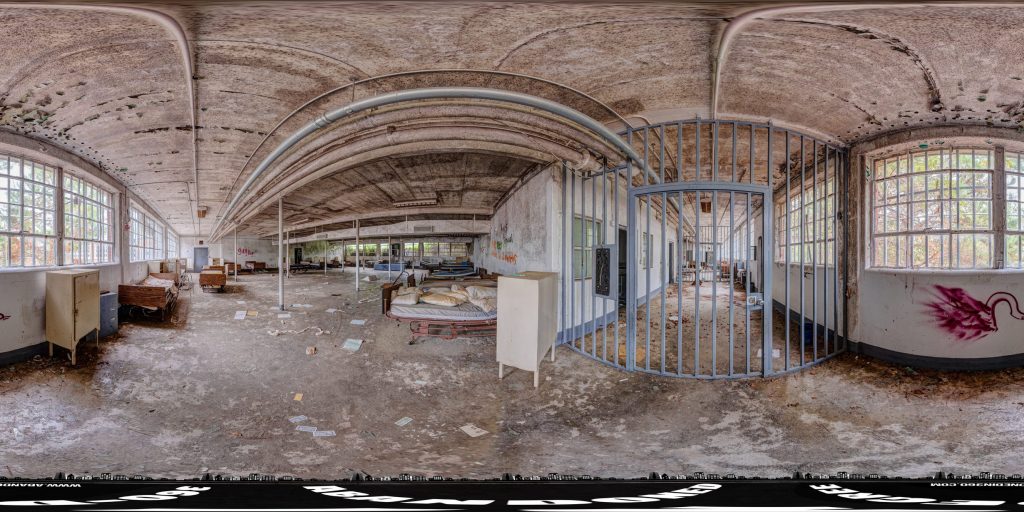
A 360-degree panoramic image inside the Washington Building at the Men’s State Prison in Milledgeville, Georgia. Photo by the Abandoned in 360 URBEX Team.
Welcome to a world of exploration and intrigue at Abandoned in 360, where adventure awaits with our exclusive membership options. Dive into the mysteries of forgotten places with our Gold Membership, offering access to GPS coordinates to thousands of abandoned locations worldwide. For those seeking a deeper immersion, our Platinum Membership goes beyond the map, providing members with exclusive photos and captivating 3D virtual walkthroughs of these remarkable sites. Discover hidden histories and untold stories as we continually expand our map with new locations each month. Embark on your journey today and uncover the secrets of the past like never before. Join us and start exploring with Abandoned in 360.
Equipment used to capture the 360-degree panoramic images:
- Canon DSLR camera
- Canon 8-15mm fisheye
- Manfrotto tripod
- Custom rotating tripod head
Do you have 360-degree panoramic images captured in an abandoned location? Send your images to Abandonedin360@gmail.com. If you choose to go out and do some urban exploring in your town, here are some safety tips before you head out on your Urbex adventure. If you want to start shooting 360-degree panoramic images, you might want to look onto one-click 360-degree action cameras.
Click on a state below and explore the top abandoned places for urban exploring in that state.
